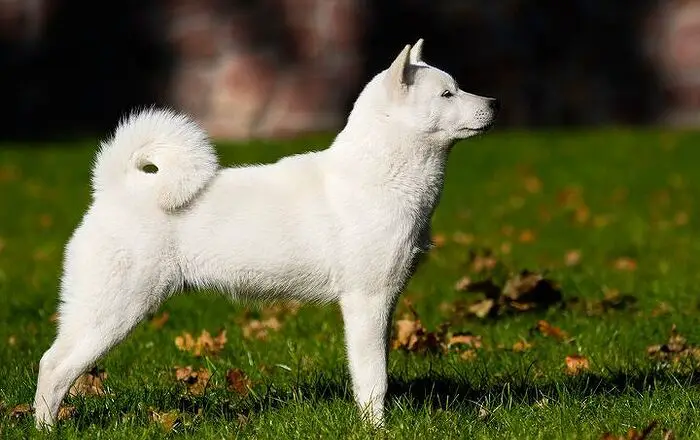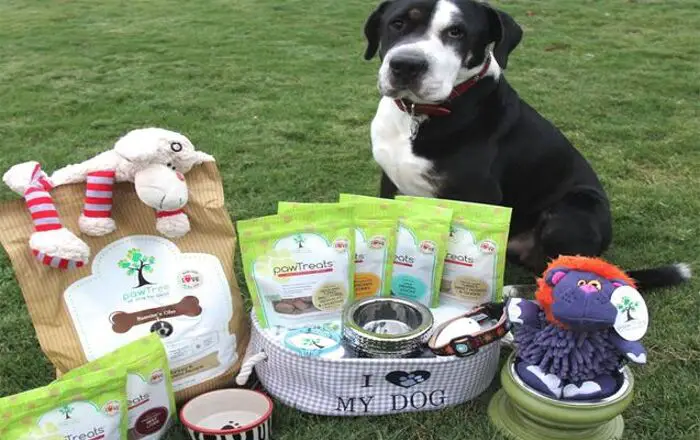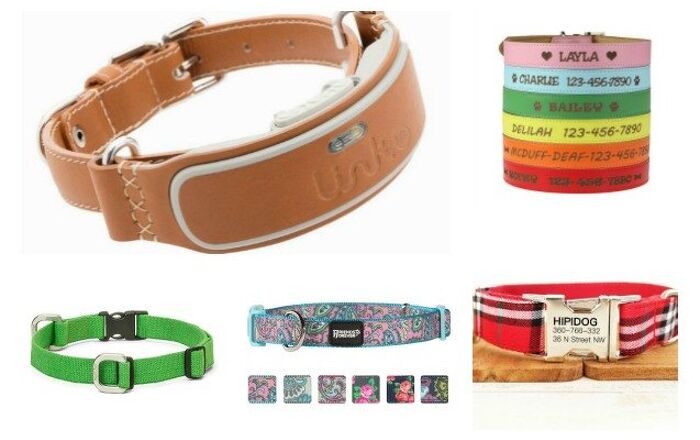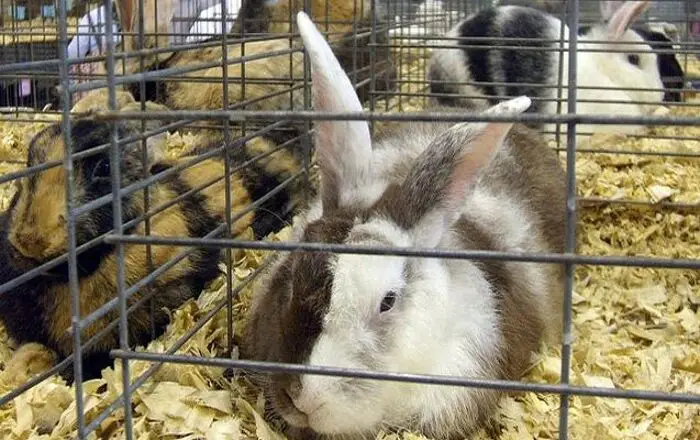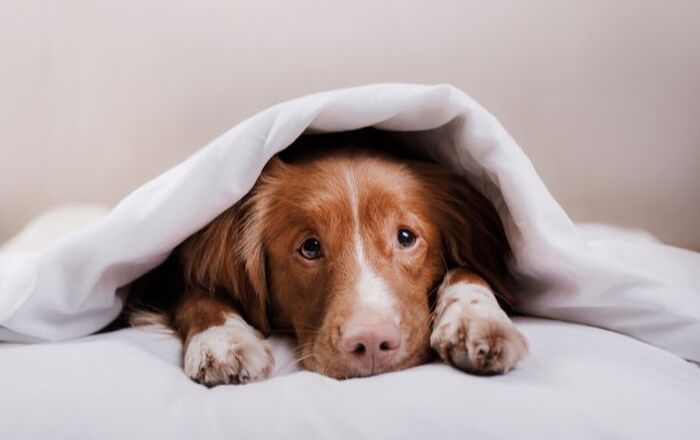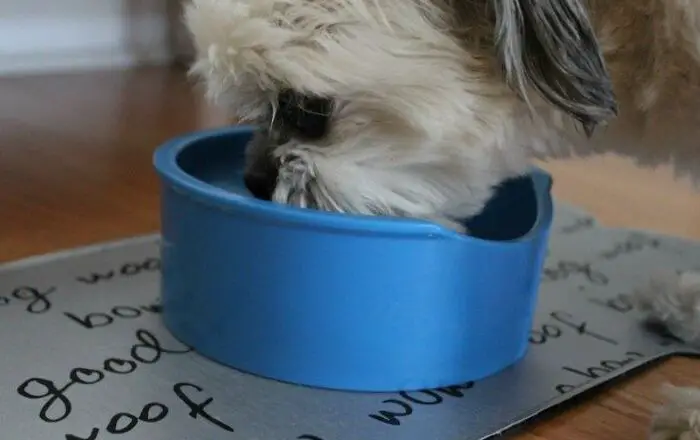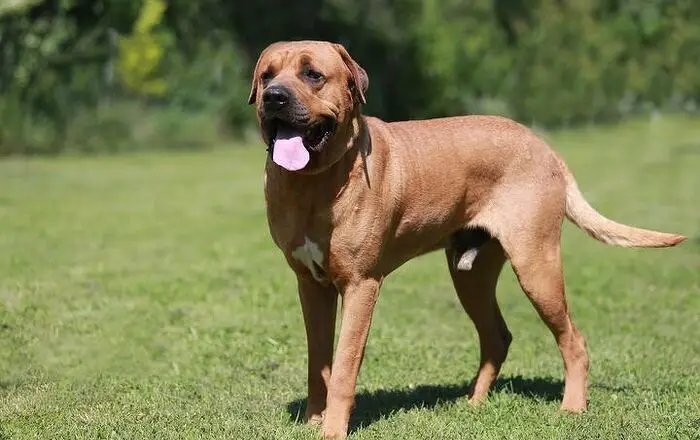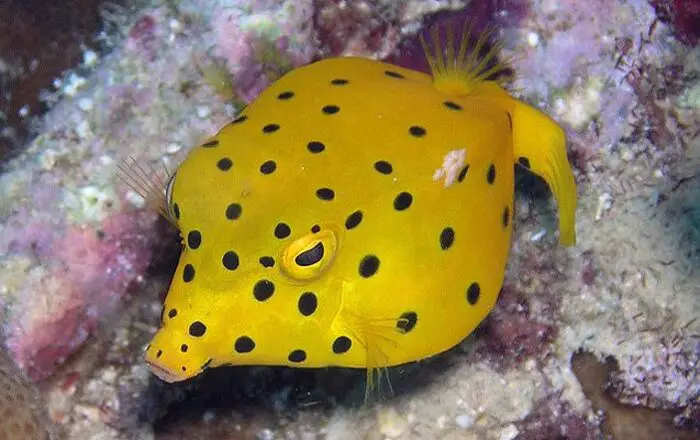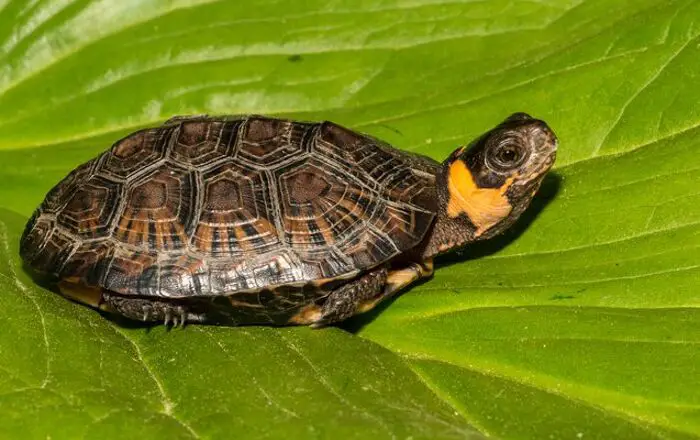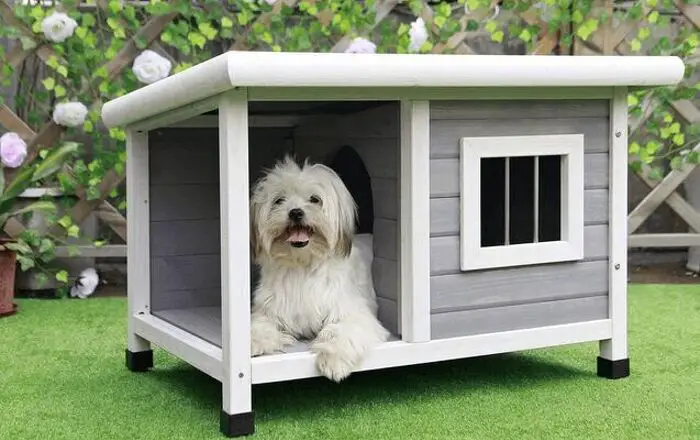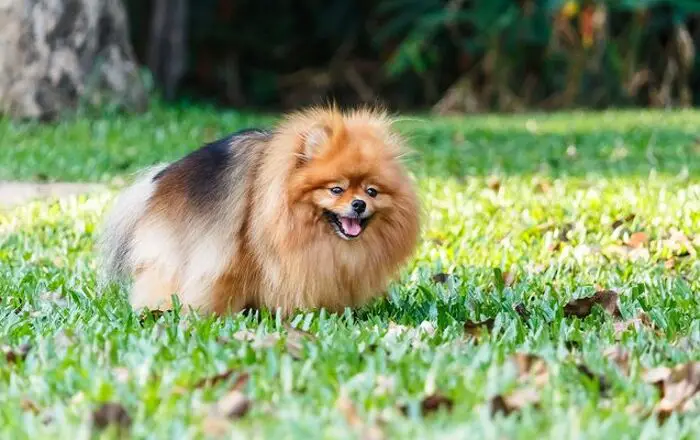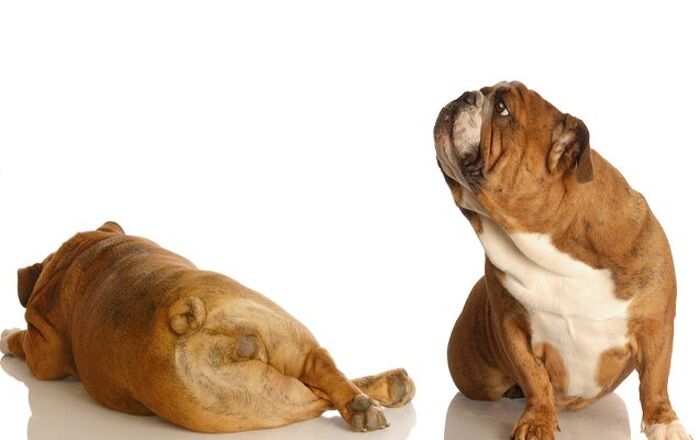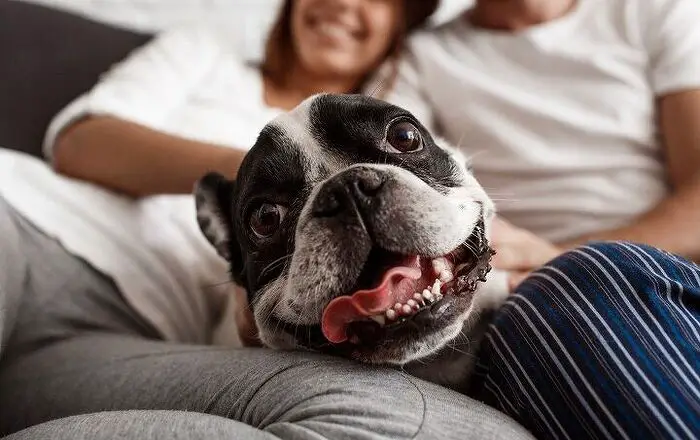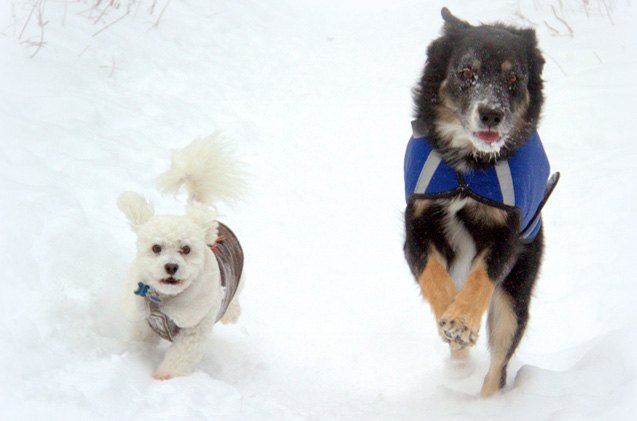
Kevin Roberts lives in Winnipeg, Manitoba, Canada. To say it gets cold there in the winter is an understatement. It’s called “Winterpeg” for a reason! And because Kevin knows cold, he understands the importance of dressing your dogs in the appropriate clothing when the mercury begins to fall. He put together what you need to know about winter coats and jackets for dogs before braving those bone-chilling temperatures.
Where I live, it gets to -40, and stays there… often for weeks at a time.
When I go out for a winter adventure, I layer my clothes. The temperature and the activity I plan on participating in determine how many layers I need to add. My dogs don’t need long johns or wool socks, as they already have a handy built-in cold-weather system thanks to their double coats. By adding a winter dog coat or jacket into the mix, you’re adding another protective layer to help them out.
To extend our time outdoors, my dogs need coats to help them get through a few winters. Dog coats come in an overwhelming variety of shapes and styles (because dogs do, too). That means finding the right fit coat for your dog is uncomplicated.
Related:Tips To Keep Your Senior Dog Warm Outdoors This Winter
I have a variety of dogs, which means that I need a variety of dog coats. None of my dogs are purebreds – they’re all mutts, all different shapes, ages and sizes. When it comes to finding the right kind of winter coat for each dog, I need to think ahead before I invest. Here are some of the factors I consider before I buy a coat for a dog.
Age
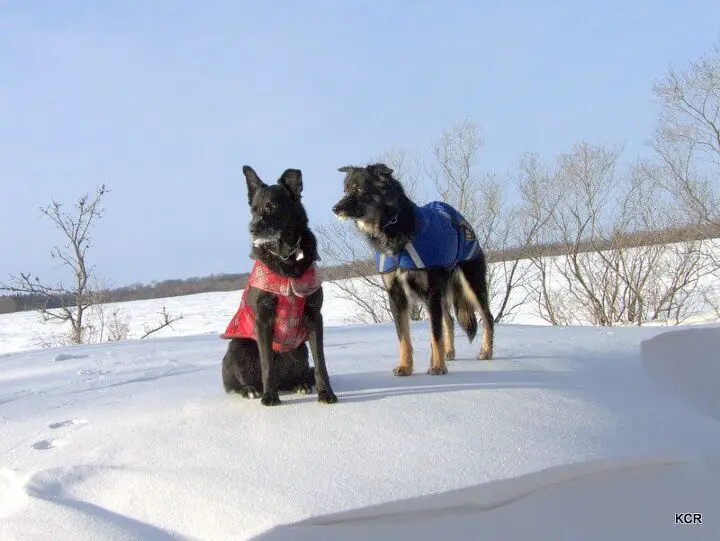
Older dogs and young pups both need to be monitored closely when outdoors in the winter. During these stages in a dog’s life, they may need some assistance in regulating their body temperatures, and a coat may prove beneficial. When I have a dog who is either young or old, I plan on frequent short outings, rather than one long adventure. I want the dog to enjoy movement and stimulation, but I don’t need him exhausted!
I have a number of coats on hand for puppies, either for dogs we may be fostering, or for a pup we are raising for our own. Puppies grow like weeds, and may only wear their coat a few weeks before they outgrow it.
Related:Turn Up The Heat With Winter Coats For Dogs
Puppies don’t need to spend long periods of time out of doors in the winter. With a young dog, we encourage potty time, rather than play time, when in the yard. A quick pit-stop, then back inside! Once a puppy is house trained, we slowly introduce them to the coat, and extend our playtime and training time outside.
My senior dogs still need regular activity and adventure to keep their bodies moving and their minds sharp. For an older dog, I look for a coat that is easy to slide on. It needs to have a wide opening so I’m not putting strain on the dog’s neck or head, and with adequate leg openings that a dog with joint pain or stiffness can easily step into and out of. I avoid coats with legs for seniors, because lifting their feet and bending their legs to get into the coat might cause discomfort.
Activity Level
You might have a obedient, quiet dog who trots alongside you during your outings. Or you might have a rip-roaring crazy collie who likes to sneak attack your other dogs and make a mad getaway through the woods before the others retaliate. Oh, wait… that’s my dog! When I’m about to buy a coat, I consider how my dog will be moving in the coat and how the coat will hold up the intended activity.
For my active dogs, I look for coats with open legs, which allows them the full range of motion as they run. I have had other dogs that prefer to move at a trotting pace, and they do fine in a coat with a full leg. Because they aren’t moving as fast, the slower, laidback dog needs more of his body covered to stay warm.
Leg Openings
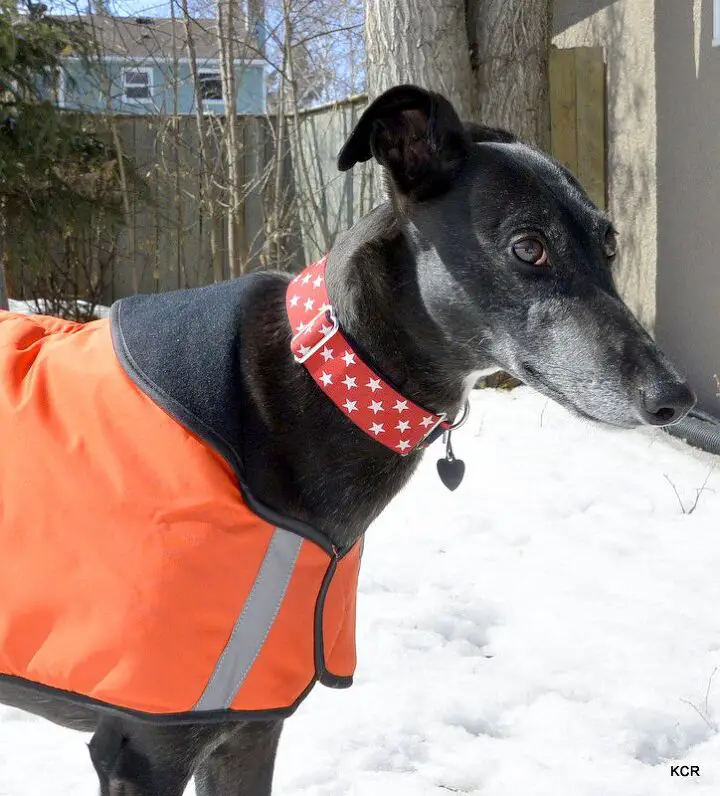
Winter dog coats come in many styles. Some have a full leg, others have a slit, while others have a wide opening for the leg to move in. A calm dog who is content with a slow and steady pace will be fine with a coat that covers his legs. An older dog who suffers from joint pain or arthritis may not tolerate putting the process of sliding his legs in each leg hole (it can take a lot of bending to get that coat over all the legs). And any day of the week, I always go with function over style.
I look for a coat with spacious leg openings for my dogs. Not only is it easier to put on them, it allows their legs to move with no restrictions. That means they can run, and jump and play, and come back home tired out and ready to sleep by the fire.
Material Used
There are many materials that are used to make dog coats. Look past the “cute” factor and think about what is best for your dog. The pet industry is a growing market, and it’s the humans who control the wallet. Be careful to avoid buying products that are designed to appeal to you, and not to keep your dog warm. I would much rather buy a coat that is ugly and works, than a pretty coat that doesn’t keep my dog warm.
Depending on the climate and activity, the materials the coat is made out of will vary. In my situation, the dogs like to roll around and run through deep snow. It doesn’t rain here in the winter, but all that rolling around means that I need a waterproof outer shell on my dogs’ winter coats. If the dogs get wet, they get cold – and cold kills. That sounds harsh, but so is winter. We all need coats that stay dry, so I look for a coat with a waterproof shell, made out of a material such as nylon.
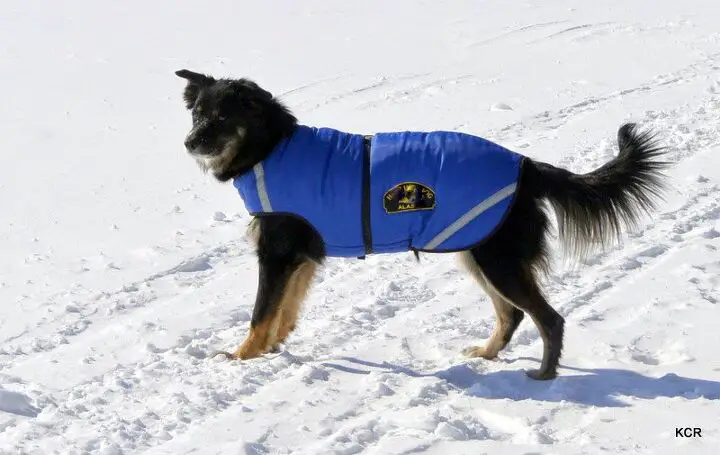
Inside the jacket, fleece is a great material for keeping a dog warm, especially those with short fur. Fleece feels good up against the dog’s body, and is great for trapping body heat and keeping it in the coat where it belongs. A coat made entirely of fleece is a fine for a clear fall day walk, or a quick walk around the block, but I wouldn’t use it when the snow falls. If your dog is out romping and playing in the snow, the fibers in fleece start to collect ice crystals. These will attract more snow and ice, and pretty soon your dog will be looking like a walking igloo.
There are a number of wool sweaters on the market. Wool is a warm choice, provided it stays dry. If it does get wet, it takes a long time to dry. And if your dog is wearing a wet wool sweater, you aren’t going to have a warm or happy dog.
There is a time and place for wool sweaters on all my dogs – and that’s autumn. When we go camping in the fall, my dogs wear simple knitted sweaters. They only have them on at night, and the knit allows the material to breathe. The sweaters are not waterproof and would not hold up well if the dogs were running around in them, but for sleeping, they are excellent.
Coat Filling
Dog coats work by trapping heat coming off of the dog’s body. The more filling the coat has, the puffier the coat will be, and the warmer it will keep your dog. Pretty simple, right? Puffy coats have more room to trap warm air and hold it against your dog’s body. Again, think about what you need this coat to realistically do and in what conditions your dog will be wearing it. Our dogs wear their warmest, puffiest coats only for winter camping, and treks on the most extreme days.
Washable
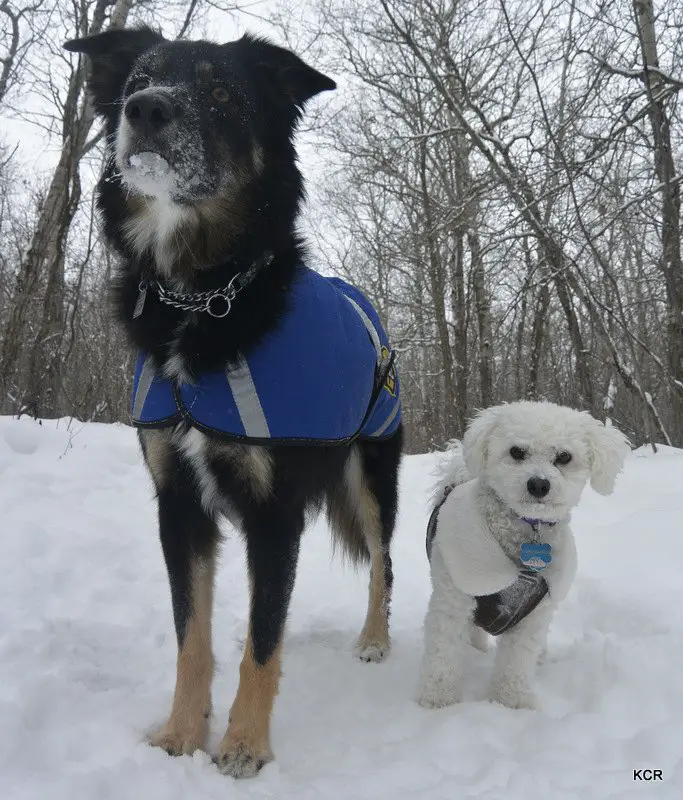
Dogs get dirty. It goes without saying that anything your dog is wearing is likely to get dirty as well. Before you buy a coat, check to see how washable it is. Chances are, at some point, you are going to want to give it a good scrubbing. Be warned: washing a coat too much can cause the fibers on the inside to compact, eliminating air pockets, and thus reducing the coat’s ability to keep your dog warm. If your dog is clean and brushed on a regular basis, the coat will stay cleaner and perform the way it should.
The Right Fit
You obviously want to avoid getting your dog a coat that doesn’t fit. Most pet stores will allow you to bring your dog inside to try on different coats. Just call ahead and ask before you bring your dog to the store. Pet stores usually have a fairly limited product line. Opening up your search to the Internet is going to give you so many more options. If you decide to buy online, follow the instructions for measurement and sizing carefully, read reviews of the coat, and if possible try it on before you buy (at a pet store). Whether you are buying online or in store, ask about the exchange policy before you hand over your cash, just in case you measured improperly.
Don’t let a little thing like winter get in the way of outdoor fun with your dogs. Bundle up and get out there!
